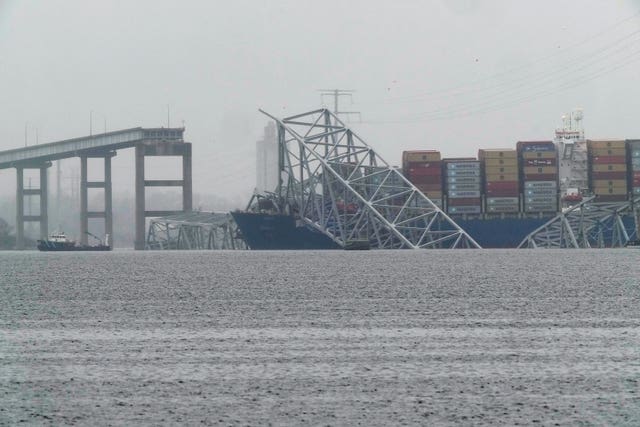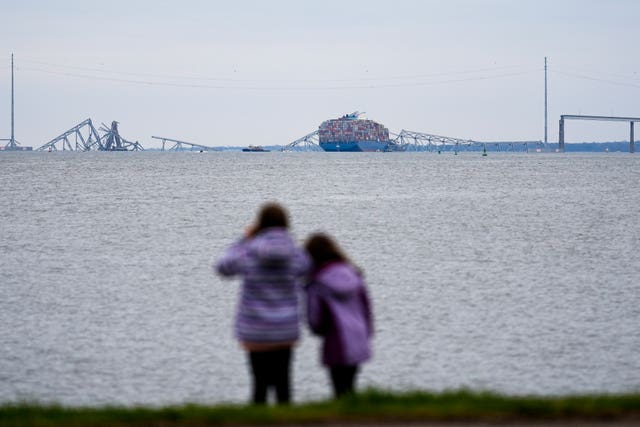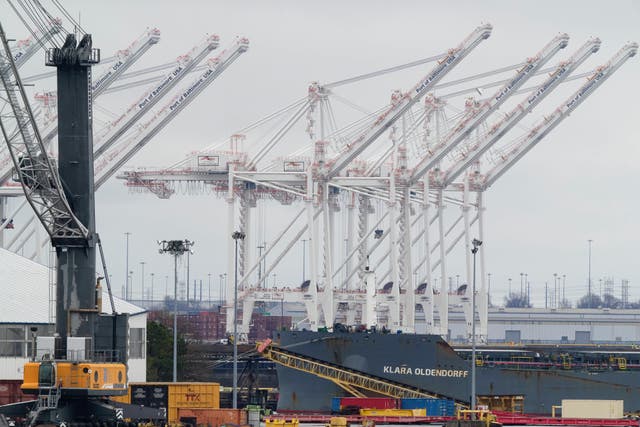Cranes arrive to start removing wreckage from deadly Baltimore bridge collapse
Federal and state officials have said the collision and collapse appeared to be an accident.

The largest crane on the US Eastern Seaboard is being transported to Baltimore so crews can begin removing the wreckage of a collapsed highway bridge that has halted a search for four workers still missing days after the disaster.
Maryland Governor Wes Moore said the large crane, which was to arrive by barge and can lift up to 1,000 tons, will be one of at least two used to clear the channel of the twisted metal and concrete remains of the Francis Scott Key Bridge, and the cargo ship that hit it this week.
“The best minds in the world” are working on the plans for removal, Mr Moore said. The US Army Corps of Engineers for the Baltimore District told the governor that it and the Navy were mobilising major resources from around the country at record speed to clear the channel.
“This is not just about Maryland,” Mr Moore said. “This is about the nation’s economy. The port handles more cars and more farm equipment than any other port in America.”

“This work is not going to take hours. This work is not going to take days. This work is not going to take weeks,” Mr Moore said. “We have a very long road ahead of us.”
Thirty-two members of the Army Corps of Engineers were surveying the scene of the collapse and 38 Navy contractors were working on the salvage operation, officials said on Thursday.
The devastation left behind after the cargo ship lost power and struck a support pillar early on Tuesday is extensive. Divers recovered the bodies of two men from a pick-up truck in the Patapsco River near the bridge’s middle span on Wednesday, but officials said they have to start clearing the wreckage before anyone can reach the bodies of four other missing workers.

Federal and state officials have said the collision and collapse appeared to be an accident.
The victims, who were part of a construction crew fixing potholes on the bridge, were from Mexico, Guatemala, Honduras and El Salvador.
At least eight people initially went into the water when the ship struck the bridge column, and two of them were rescued on Tuesday, officials said.
The crash caused the bridge to break and fall into the water within seconds. Authorities had just enough time to stop vehicle traffic, but did not get a chance to alert the construction crew.
The cargo ship Dali, which is managed by Synergy Marine Group, was headed from Baltimore to Sri Lanka. It is owned by Grace Ocean Private Ltd and was chartered by Danish shipping giant Maersk.
Synergy extended sympathies to the victims’ families in a statement on Thursday.
“We deeply regret this incident and the problems it has caused for the people of Baltimore and the region’s economy that relies on this vitally important port,” Synergy said, noting that it would continue to cooperate with investigators.

Scott Cowan, president of the International Longshoremen’s Association Local 333, said the union was scrambling to help its roughly 2,400 members whose jobs are at risk of drying up until shipping can resume in the Port of Baltimore.
“If there’s no ships, there’s no work,” he said. “We’re doing everything we can.”
The huge vessel, almost as long as the Eiffel Tower is tall, was carrying nearly 4,700 shipping containers, 56 of them with hazardous materials inside.
Fourteen of those were destroyed, officials said. However industrial hygienists who evaluated the contents identified them as perfumes and soaps, the Key Bridge Joint Information Centre said, and there was “no immediate threat to the environment”.





